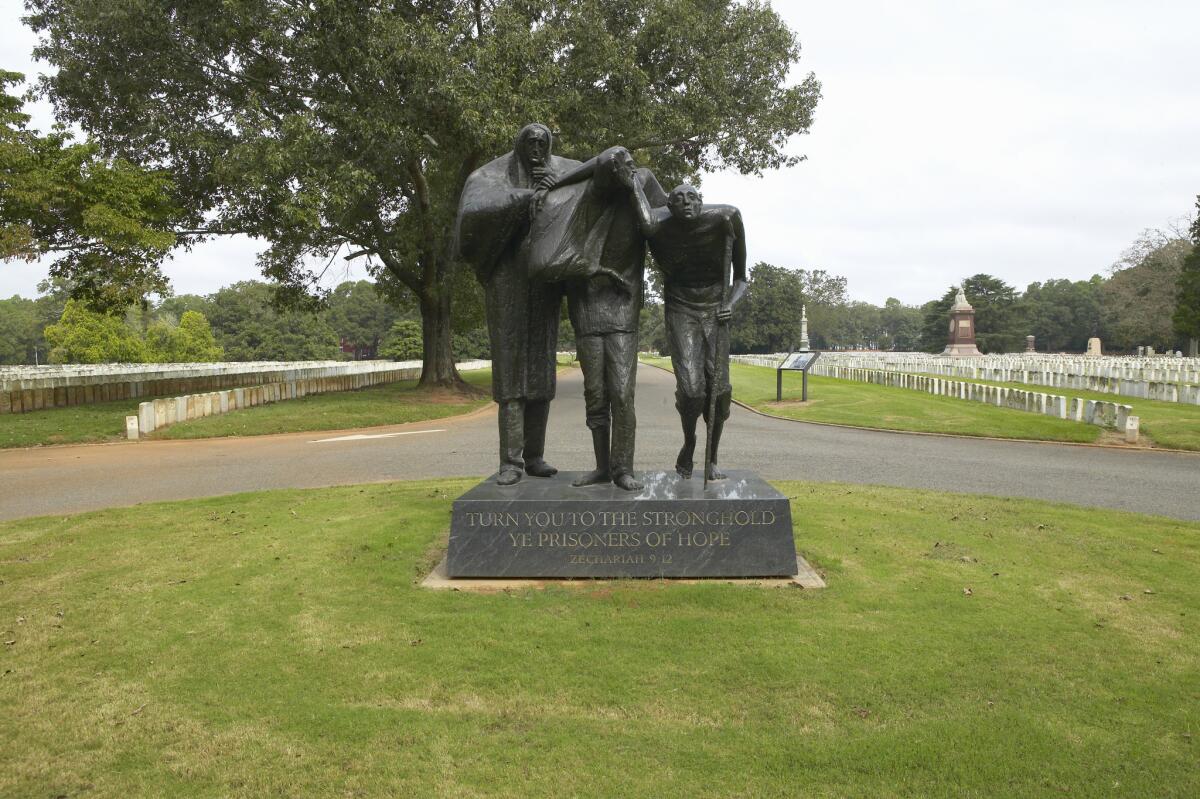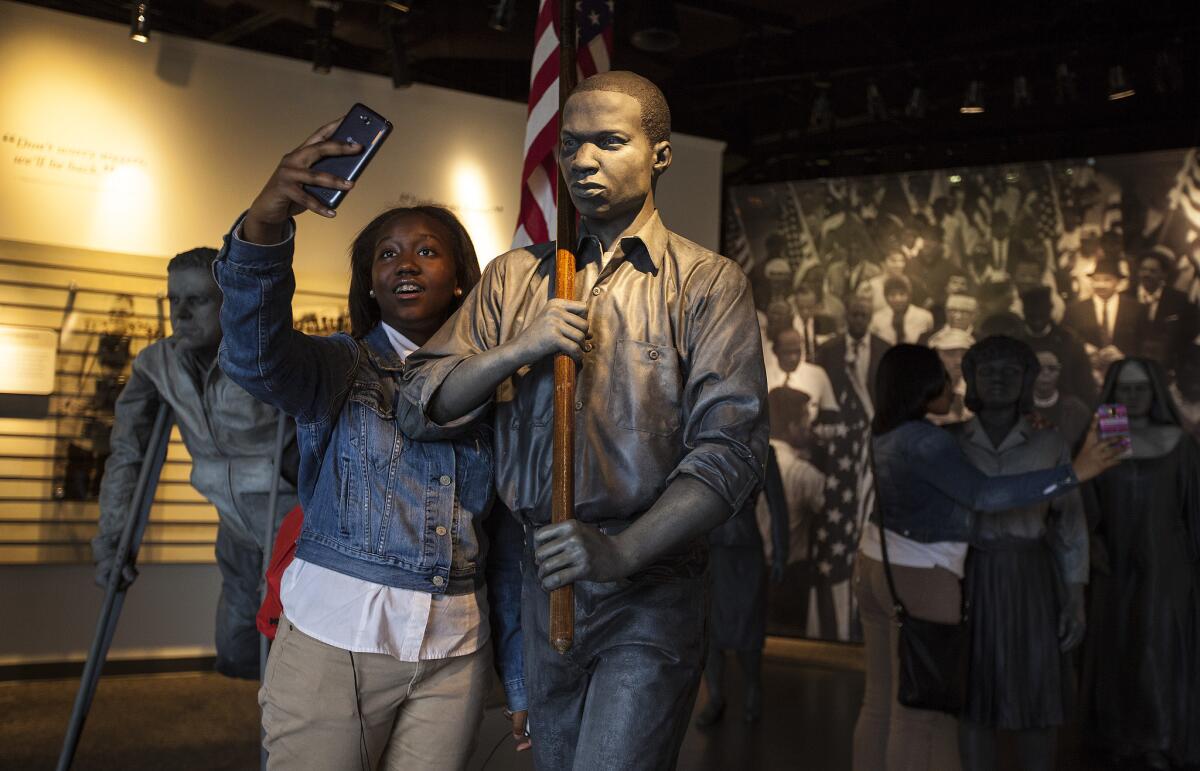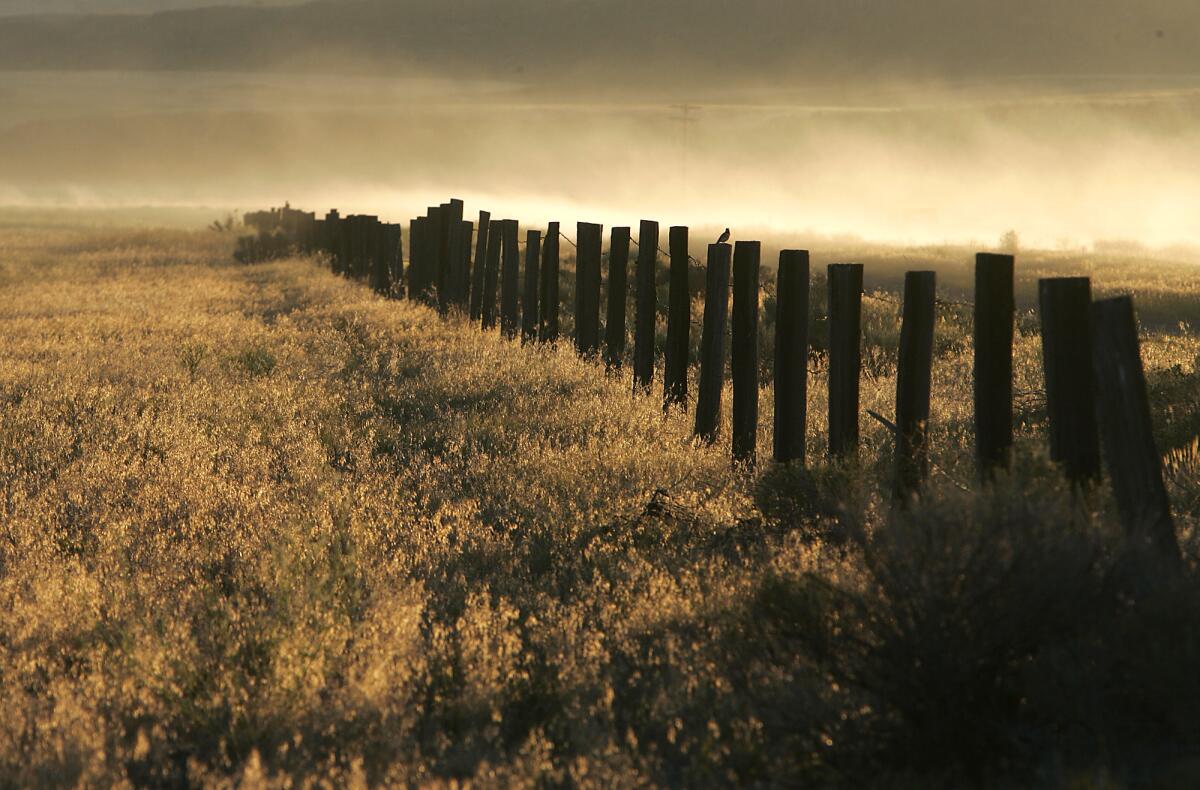Memorials to a tragic past: National Park Service sites that consider the dark side of our history
- Share via
As a curator of American history, the National Park Service can be the bearer of bad news. Sand Creek is not the only site that considers the dark side of our past.
Series: Celebrating our national parks »

Andersonville National Historic Site
During its peak, 45,000 Union soldiers were confined at the military prison maintained by the Confederacy at Andersonville in Georgia. Almost 13,000 died here. www.nps.gov/ande
Horseshoe Bend National Military Park
Horseshoe Bend, in eastern Alabama, commemorates an 1814 battle waged between 3,300 soldiers under Maj. Gen. Andrew Jackson and 1,000 Red Stick Creek warriors on the Tallapoosa River. More than 800 Red Sticks died that day, and the resulting treaty led to the cession of 23 million acres to the United States. www.nps.gov/hobe
Kalaupapa National Historic Park
Kalaupapa, on the north shore of the Hawaiian island of Molokai, was the site of exile for Hawaiians who had contracted leprosy (Hansen’s disease) in the aftermath of colonization. Since 1866 more than 8,000 people have died there. www.nps.gov/kala
READ: Confronting our history and ‘unspeakable acts’ at the site of the Sand Creek massacre »

Selma to Montgomery National Historic Trail
To protest the shooting of voting rights activists by an Alabama state trooper, thousands of nonviolent demonstrators marched from Selma to Montgomery, Ala. Days before, nearly 600 had been attacked on the Edmund Pettus Bridge. www.nps.gov/semo
Trail of Tears National Historic Trail
The Trail of Tears, passing through nine states from Kentucky to Oklahoma, is a series of sites that commemorate the ordeal of the Cherokee who in 1838 were forcibly removed from their homelands in the southeastern United States and made to travel to Indian Territory, now Oklahoma. www.nps.gov/trte/index.htm

Tule Lake Unit, Manzanar and Minidoka National Historic Sites
In 1942, 120,000 Japanese American citizens and resident Japanese aliens were incarcerated in 10 relocation camps throughout the western United States and Arkansas. The National Park Service has preserved three of these camps, Tule Lake Unit in Northern California, Manzanar, in Eastern California; and Minidoka in Idaho and Washington. The National Park Service will open a fourth on Oahu. www.nps.gov/tule, www.nps.gov/manz, www.nps.gov/miin
Washita Battlefield National Historic Site
Eight years before the Battle of the Little Big Horn, Lt. Col. George A. Custer led the 7th U.S. Cavalry on a surprise dawn attack on a village of Cheyenne camped along the Washita River in Oklahoma. Chief Black Kettle, a survivor of Sand Creek, was killed during the battle. www.nps.gov/waba
ALSO
Confronting our history and ‘unspeakable acts’ at the site of the Sand Creek massacre
‘So it won’t happen again’: How the descendants remember the Sand Creek massacre
‘Sand Creek is the story of individuals,’ soldiers, warriors, victims, heroes and criminals
More to Read
Sign up for The Wild
We’ll help you find the best places to hike, bike and run, as well as the perfect silent spots for meditation and yoga.
You may occasionally receive promotional content from the Los Angeles Times.







